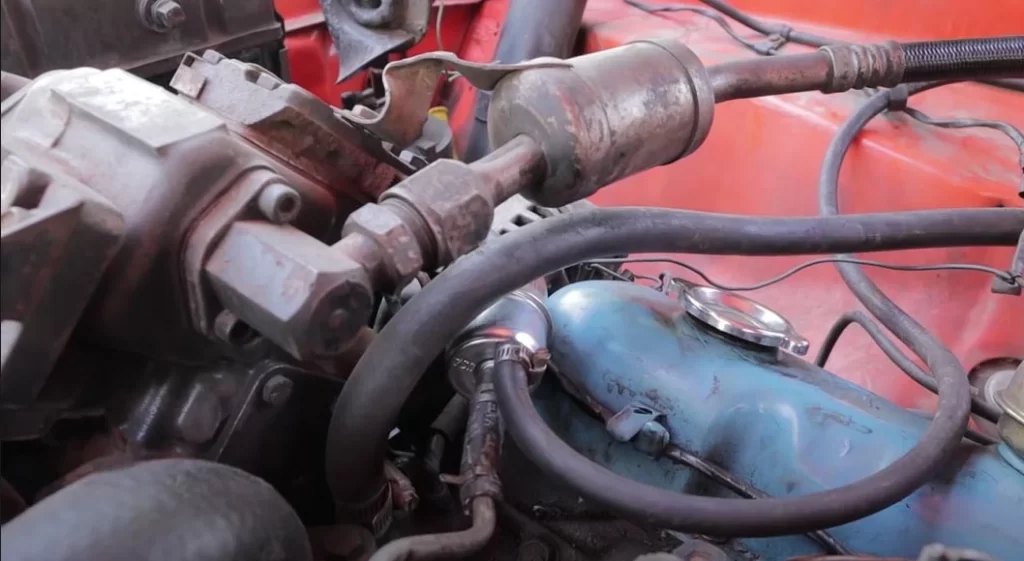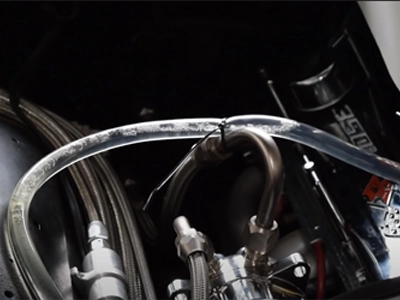Fuel additive to prevent vapor lock is the major issue in now a day. Before it reaches the carburetor or fuel rail, liquid gasoline vaporizes. Because vapor cannot be efficiently pumped by pumps intended for liquids, this is an issue Causes of vapor lock:
- Gasoline pressure (and flow) decrease
- Power outage
- Stalling
- Engine start-up difficulties
Heat is the primary cause of vapor lock. When the temperature in a vehicle’s engine or exhaust system is too hot, the fuel can evaporate from the lines. Altitude and certain winter fuel blend both lower the boiling point of the fuel. Vapor lock can be exacerbated by this. What can we do with fuel additive to prevent vapor lock? Can we use fuel additive to prevent vapor lock? we are going to discuss this.
What can we do for Fuel additive to prevent vapor lock?
Cooldown the fuel system if you get a vapor lock. The gasoline must be cooled and re-solidified. The following are some suggestions:
- The vehicle should be parked under the shade.
- Take a break from the scorching asphalt.
- Open the hood to allow the engine to cool down.
- Fuel bowls, lines, and mechanical pumps should be sprayed with cold water.
- Start the engine when the system has cooled down.
- While you’re cranking the engine, gently press the accelerator.
- This can assist in removing any remaining vapor from the system.
- Press it a little bit, but not all the way to the ground.
- Once it’s running smoothly, keep the accelerator at the same place it was when it started.
- A sputtering engine is possible until all of the vapor has been removed from the car’s system.

How to Fuel additive to prevent vapor lock prevent this from happening again?
Carbureted gasoline cars with an engine-driven mechanical fuel pump are most susceptible to vapor lock. Vapor locks can occur in fuel-injected cars. However, it is quite uncommon. Vapor locks can avoid by using E85, Ethanol, and Methanol.
Routing gasoline lines away from exhaust parts, heater hoses, etc., is the first step in preventing vapor lock. Heat Shields can also be used in situations when they are appropriate.
Electric Fuel Pumps can also install near the tank. Many of the fuel in the lines is pressurized as a result. Vaporization is more difficult when the fluid is under pressure.
To keep the carburetor cool, you can install a Phenolic Carb Spacer or a Carburetor Heat Shield.
Preventative measures to avoid vapor lock
When talk about the fuel additive to prevent vapor lock, we have to make sure the prevention measurs too. The U.S. Environmental Protection Agency (U.S. EPA) enforces severe standards for vapor pressure on petroleum manufacturers since it is important to evaluate fuel performance and the risk of outgassing. ASTM D4814, an automotive fuel specification, requires that gasoline be tested to ASTM D5188 to avoid vapor lock and environmental issues. Using this standard, vapor-liquid ratio temperatures can be analyzed. T(V/L) = 20 indicates the risk of vapor lock in automobile gasoline requirements, which are referred to as T(V/L) = 20 in the literature. In hotter climates and at higher altitudes, this danger is greater.
Why does Ethanol Blending have an Effect on Vapor Lock?
Fuel testing is becoming more important as the amount of ethanol being added to gasoline increases and the world experiences longer and longer periods of hot weather. Many older engines aren’t ready to run on contemporary fuels because they have never designed to do so. The E10 regulation, which allows 10 per cent ethanol (EtOH) to add to the fuel, is now becoming more common in the United States.

The U.S. Environmental Protection Agency (EPA) frequently has to alter gasoline volatility restrictions for the petroleum industry in order to avoid high emissions and to maintain drivability. Even new cars have plagued by this problem, as this essay will demonstrate.
Fuels must test for their V/L ratio temperature because ethanol mixing affects the vapor pressure of the fuel. In comparison, the vapor pressure of gasoline is substantially higher. The temperature at which alternative V/L ratios are possible to affect by the presence of ethanol. As is now in the United States, adding 10% ethanol to gasoline reduces the V/L ratio temperature significantly.
When the outside temperature remains high, or the fuel system overheats due to high engine temperatures and/or inadequate insulation, vapor lock can occur in any type of engine. Vapor locks can cause by high-volatility fuels. Vaporizing fuel causes a halt in fuel supply when it boils within a metal line or carburetor. An engine may stall or reject to restart even though it is running flawlessly. Vapor lock can prevent by inspecting the current fuel delivery system and making minor adjustments.
First step is to begin.
As a start of the Fuel additive to prevent vapor lock, It depending on the kind of transmission, put the transmission in park or neutral. Turn on the hazard lights and open the bonnet. Removing the engine cowl or case cover is necessary for all other engine uses. Unsnap the cowl snaps with your hands and remove the cover of a boat. Bottom latch bolts can be removed using a socket and wrench on some boat engine cowls.
Second step
The metal lines that connect the carburettor or fuel rail to injected systems should examine. As long as the intake manifold or exhaust manifold is near the metal fuel line, it will act as a heat sink. A pipe cutter uses to remove the most amount of metal line. Allow for a hose to attach to the original line.
Third step.
Push a neoprene-impregnated fabric line or hose onto the metal line’s cut end and replace it. Unscrew and completely remove a gasoline inlet’s bolts with an appropriate wrench. Install a hose nipple-end adapter in the gasoline inlet. Cut down the hose to the desired length with wire cutters. Hose clamps use to secure the hose, and the clamps have tightened with a screwdriver. Keep the hose elevated and away from heat sources by appropriately routing it.
Fourth step of the process.
Make strips of reflective heat insulation cloth with scissors and wrap them around your gasoline lines. Fuel lines made of metal or neoprene can wrap. Tightly wrap the fuel line with the lengths you’ve cut to ensure you’ve covered all of it. Wrap the heat-resistant tape over the insulation fabric multiple times to keep it in place.
Fifth step of the process.
Fuels with a high volatility rate, such as those containing additional alcohol, should be avoided. Find out in your owner’s manual what your rated Reid Vapor Pressure is for a marine engine. Use a socket to drain your gas tank and then refill it with gas with a lower RVP. Vapor lock can be avoided by reducing the gas’ volatility.
This is the final step for Fuel additive to prevent vapor lock.
Remove the filter hose clamps with such a screwdriver and replace the gasoline filter. Attach a new filter to each of the hose’s ends after disconnecting the old ones. With a screwdriver, tighten the hose clamps to their original positions. Using a gasoline line wrench, disconnect the fittings on both ends of metal in-line fuel filters. Using a gasoline line wrench, fasten the new filter to the fuel line. With a new filter, you’ll get more fuel. Straighten or replace any fuel line kinks or severe bends that you find.
Check the coolant level by removing the radiator cap. If the radiator is low on water or coolant, you may need to do so. A hot engine is more likely to have a vapor lock, so make sure the thermostat and cooling fan are working properly. Marine engines require a firm brush to remove any obstructions from the engine cowl vents. Use a firm brush to remove road debris, plastic, leaves, and insects from the radiator fins of an automobile.
Some related FAQs about “Fuel additive to prevent vapor lock”
Will using a fuel additive to prevent vapor lock void my vehicle’s warranty?
As long as the fuel additive is permitted by the manufacturer and used in accordance with their instructions, doing so will not void the guarantee on your car.
Hope you enjoy the article and get the grate knowledge of the Fuel additive to prevent vapor lock. If you have any additional information, please comment below for knowledge sharing. And if you have more questions about cars, please check this out.
